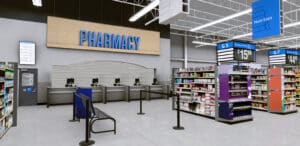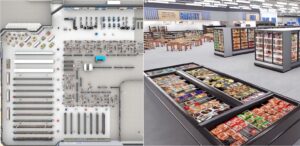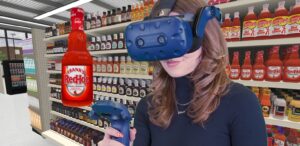8 Benefits of Virtual Reality Employee Training in Retail
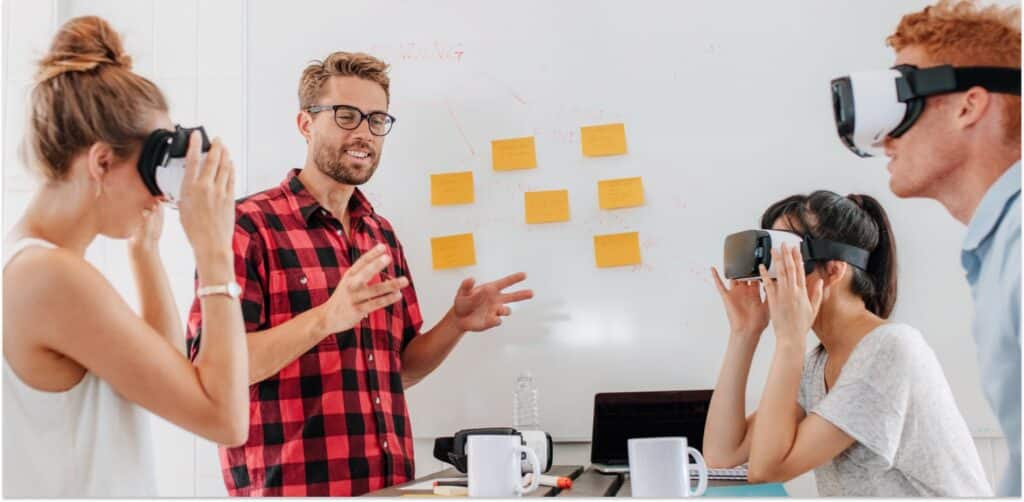
Improve retail employee product knowledge, skills and process performance with realistic job simulations in virtual reality training software.
Retailers strive to create the best retail training programs for employees because their actions have an incredible influence on the shopper’s store experience. Organizations use numerous retail training methods to educate their employees, including workbook readings, online courses, job shadowing, videos and more.
Although there are these numerous retail training methods, it is proven that the fastest and most engaging way to learn is through actually doing the actions for yourself. Virtual reality (VR) headsets provide retailers and suppliers with an immersive learning tool for better training and development.
Organizations are starting to understand the power of virtual reality retail training on transforming their workforce. Here are the top 8 advantages of using VR for retail employee training.
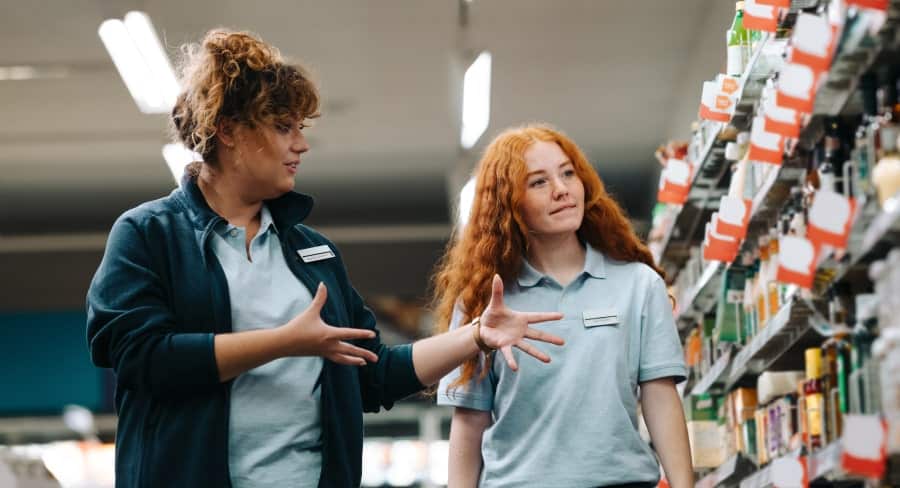
1. Create a smoother onboarding and coaching process
Employee training should quickly provide an individual with the necessary skills for their position so they can effectively perform in their role. Unfortunately, employee onboarding often takes longer than desirable and coaching impedes on the time and schedule of team leaders.
Online training courses and videos have mitigated some training burdens, but they do not have the greatest impact on learners. Individuals require hands-on practice to build their retail skills and the most successful way to do this is through immersive learning in VR.
Advanced VR technology provides organizations with both effective and economical training. The realistic and engaging practice that employees receive from VR retail training decreases workforce training time and improves overall knowledge retention.
2. Introduce new retail floor technology and equipment
Don’t waste time waiting for new products, equipment or technology to arrive in person before training. VR replicates any environment in the physical world so that employees have the ability to learn by doing without any fear of making a mistake.
Walmart virtual reality training familiarized employees on new Pickup Tower units that were going to be installed in their stores. This VR training didn’t require any teacher and allowed employees to be trained on the new equipment at any time they were available within a matter of minutes.
“The great thing about VR is its ability to make learning experiential. When you watch a module through the headset, your brain feels like you actually experienced a situation. We’ve also seen that VR training boosts confidence and retention while improving test scores 10 to 15 percent,” said Andy Trainor, Walmart’s senior director of Walmart U.S. Academies.
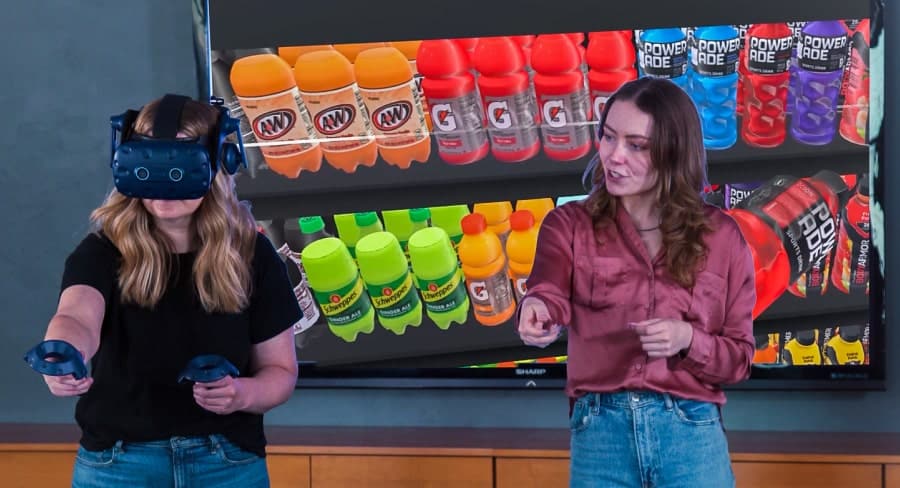
3. Assess job candidate performance through role simulation
VR training solutions can be used to accurately evaluate individuals during interviews. Retail companies are able to find out how job candidates or current employees will behave in certain positions using realistic task simulations.
VR technology offers powerful predictive analytics that track and collect where an individual looks, the actions they take and any choices they make.By observing how individuals make decisions and take action in VR, employers are able to accurately predict their performance in real life.
4. Deliver corporate and retail category management training
VR experiences provide retail companies with realistic product visualization and merchandising opportunities. Easily offer corporate training to category managers on new products through lifesize 3D models or visual merchandising with exercises in virtual stores.
Some virtual training technology can also be integrated within your standard presentation tools to provide trainees with a mix of both company information and interactive experiences. VR retail presentations can realistically showcase new store innovations in 3D on your computer and do not require anyone to wear a headset.
Presenters can enter store environments to explore new retail layouts, move down aisles to see planograms and click on products for detailed 3D viewing. It provides an engaging solution for debuting retail information in real time during face-to-face meetings, trade shows or online over zoom.
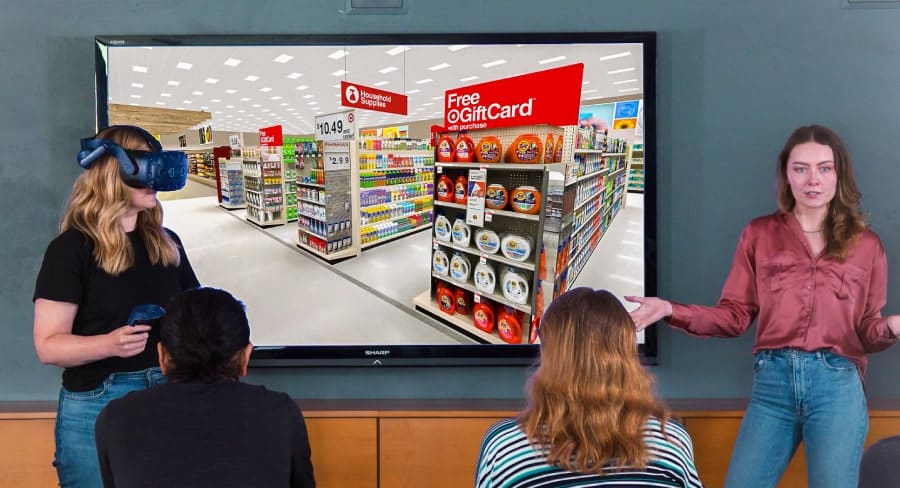
5. Establish realistic job expectations with live demonstration
Virtual reality training solutions can be used to showcase what an actual day working on the job will look like. Allowing candidates or new hires a first-person perspective of their position will get them familiar with the company and their responsibilities.
A realistic job preview in VR helps retailers recruit and retain more informed, committed employees. It is a cost-effective way to increase employee retention and boost overall job satisfaction.
6. Increase speed of employee proficiency for store operations
The retail industry is constantly changing, making it important for organizations to keep their employees up to date with the latest trends or procedures. While many companies may rely on video or online courses, those activities are no match for practice in the real world.
Realistic simulations in VR offer a faster and more comfortable transition to real-life activity because participants have already performed the action. This reduces time required for job shadowing a new process and gets associates working effectively on their own as quickly as possible.
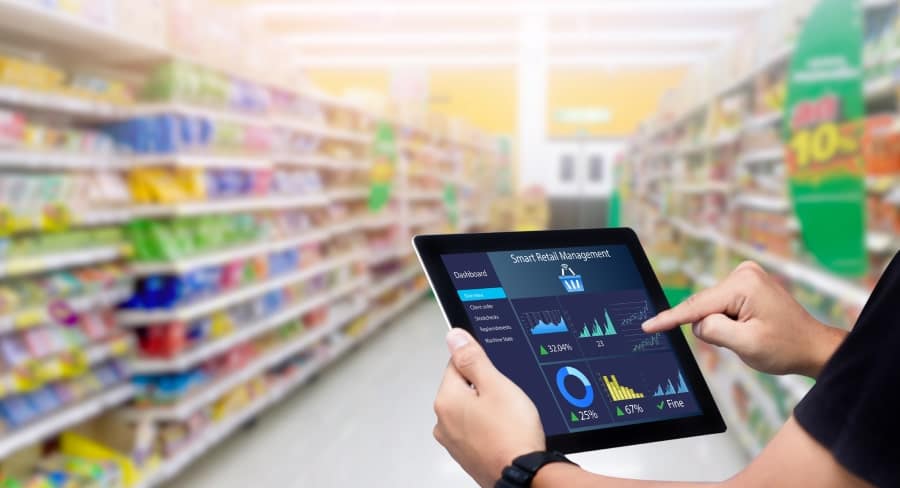
7. Ensure workers know how to react in emergency situations
A leading case for the use of VR for training in numerous industries is because difficult and dangerous situations can be practiced without any real world risk. For example, it is common for the healthcare industry to use VR as a way for medical professionals to practice highly complex surgerys without consequences in the physical world.
In retail, emergency situation training in VR may consist of testing employees on where to go during severe weather or how to react if a dangerous person enters the store. It could also offer a helpful guide in providing experience in rare situations such as crowd control or handling a difficult customer.
8. Improve customer service empathy using soft skill exercises
How retail associates interact with customers will reflect heavily on an organization’s brand success and product sales. In fact, a 2022 Customer Experience (CX) Trends Report by Zendesk reports that 57 percent of consumers say excellent customer service is a factor in their brand loyalty.
Traits such as helpfulness, empathy, patience and friendliness are incredibly important soft skills that are often difficult to assess or learn. Training with VR has the power to transport employees to the retail store floor where they can practice retail selling and gain better product knowledge.

Subscribe to our newsletter
Get our blogs and the latest retail news delivered to your inbox monthly.
Recent Posts
Pharmacy Merchandising Tech: 5 Powerful Ways to Boost OTC Sales
Here’s a staggering fact: Americans now buy over-the-counter (OTC) products 26 times a year-that’s 8x more often than they visit the doctor. With the OTC market exploding from 42 billion to 70 billion by 2033, the race is on for shelf space in 750,000+ stores. But here’s the problem, 44% of shoppers discover over-the-counter products…
How to Use 3D VR for Smarter Store Layout and Design
Explore how VR is revolutionizing grocery store layout and design planning by offering enhanced blueprint visualization in immersive 3D environments. Grocery store layout strategy is essential for establishing a positive and productive customer experience. A thoughtfully designed layout not only improves convenience but also fosters a sense of discovery, leading to longer, more enjoyable shopping…
Sauce & Condiment Sales Heat Up as New Tech Helps Out
Young Millennials and Gen Z consumers have fueled a boom in hot sauce trends and condiment sales. This surge is pushing leading brands and retailers to elevate their game with smarter virtual product innovation and assortment optimization. The condiment and hot sauce industry is thriving in 2024, driven by evolving consumer tastes and the growing…

